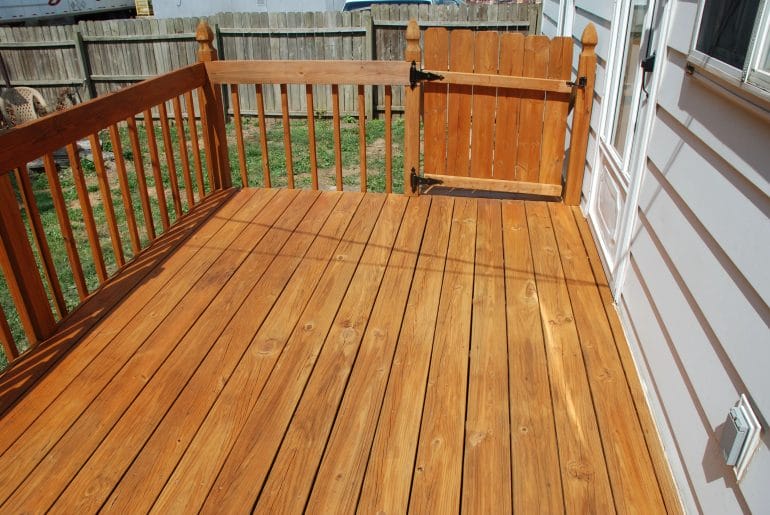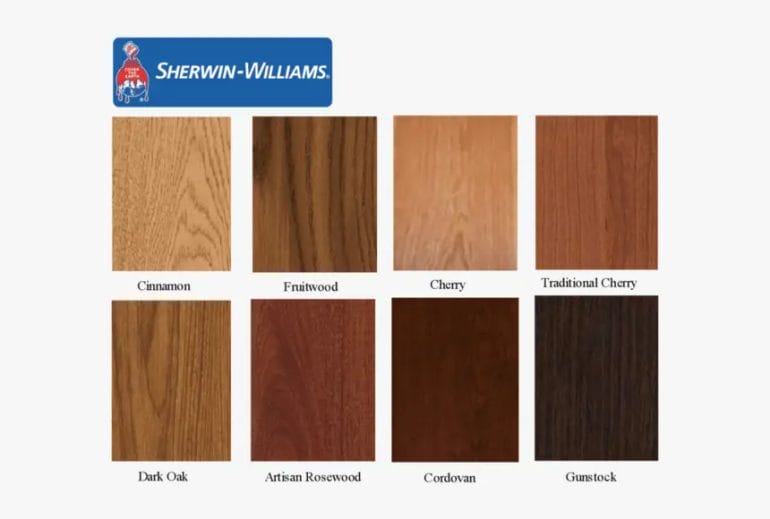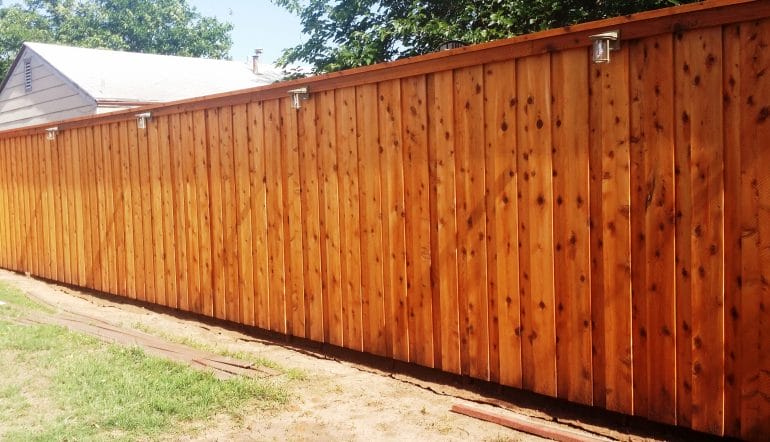Cedar wood is known for its beautiful natural color, which can vary depending on the specific type of cedar species.
Common colors of cedar wood include reddish-brown, light amber, and golden yellow tones.

The color of cedar wood is often admired for its warmth and richness, making it a popular choice for both interior and exterior applications.
Whether used for furniture, flooring, or siding, the distinct color of cedar wood adds a touch of elegance and natural beauty to any space.
Over time, cedar wood may develop a silvery-gray patina when exposed to the elements, adding to its charm and character.

Natural Shades and Variations of Cedar Wood
Cedar wood is known for its stunning natural beauty and unique characteristics. It is a highly sought-after material for various construction and woodworking projects due to its durability, resistance to decay, and beautiful grain patterns. One of the appealing aspects of cedar wood is its wide range of natural shades and variations, which adds to its overall aesthetic appeal. In this section, we will explore the different natural shades and variations of cedar wood.
1. Red Cedar
Red cedar, also known as Western red cedar, is one of the most popular variants of cedar wood. It features a rich reddish-brown color that ages beautifully over time, deepening in tone and developing a weathered patina. The vibrant hue of red cedar makes it a preferred choice for outdoor applications such as decking, siding, and fencing.
2. White Cedar
White cedar, also referred to as Eastern white cedar, has a lighter color palette compared to red cedar. It exhibits a pale yellowish-white hue with a subtle grain pattern. White cedar is commonly used for interior applications such as paneling, trim work, and furniture. Its light tone creates a bright and airy atmosphere in any space.
3. Aromatic Cedar
Aromatic cedar, also known as Eastern red cedar, possesses a distinct reddish-brown color with a strong, pleasant fragrance. It is commonly used for making cedar chests and closets due to its natural ability to repel insects and moths. The unique color and scent of aromatic cedar make it a popular choice for specialty woodworking projects.
4. Port Orford Cedar
Port Orford cedar is a rare variety of cedar wood that exhibits a lighter yellow color with subtle hints of pink and red. It is highly prized for its exceptional strength and natural resistance to decay, making it ideal for exterior applications such as decking, siding, and outdoor furniture.
5. Spanish Cedar
Spanish cedar, despite its name, is not a true cedar but is often categorized as one. It showcases a warm reddish-brown color with occasional dark streaks. Spanish cedar is highly durable and resistant to rot and insect damage. It is commonly used for crafting fine furniture, cabinetry, and musical instruments.
6. Yellow Cedar
Yellow cedar, also known as Alaska cedar, exhibits a pale yellowish-brown hue with a fine, even grain. It is renowned for its exceptional durability and resistance to extreme weather conditions. Yellow cedar is frequently utilized for outdoor applications such as decking, siding, and boat building.
These are just a few examples of the natural shades and variations of cedar wood. Each type of cedar offers its own unique characteristics and beauty, making it a versatile material for a wide range of projects. Whether you prefer the rich red tones of Western red cedar or the light and airy feel of white cedar, cedar wood is sure to enhance the aesthetic appeal of any space or construction project.

Exploring the Different Colors of Cedar Wood
Cedar wood is a popular choice for various woodworking projects due to its natural beauty and durability. One of the fascinating aspects of cedar wood is its range of colors, which can vary from light to dark shades. In this section, we will explore the different colors of cedar wood and discuss their characteristics and applications.
1. Light Cedar
Light cedar wood has a pale, almost white appearance, making it perfect for creating a bright and airy atmosphere. This color is often associated with a modern and minimalist aesthetic. Light cedar wood is commonly used in contemporary furniture design, interior paneling, and trim work. Its light color makes it an excellent choice for creating a sense of spaciousness in small spaces.
2. Amber Cedar
Amber cedar wood showcases warm, golden tones that add a touch of richness and elegance to any project. This color variation is highly sought-after for its natural beauty and has a timeless appeal. Amber cedar is often used in high-end furniture making, cabinetry, and flooring. Its warm tones create a cozy and inviting atmosphere, making it a popular choice for rustic or traditional designs.
3. Red Cedar
Red cedar is known for its vibrant reddish-brown hue, which brings warmth and character to woodworking projects. This color variation is often used in outdoor applications such as decking, fencing, and siding due to its natural resistance to decay and insect damage. Red cedar’s deep color also makes it a favorite for creating statement pieces of furniture or accent features in interior design.
4. Dark Cedar
Dark cedar showcases deep brown or chocolate tones, adding a sense of sophistication and richness to any space. This color variation is often used in high-end furniture, flooring, and architectural details. Dark cedar wood creates a luxurious and dramatic look, making it a fantastic choice for creating a bold statement in both traditional and contemporary designs.
5. Weathered Cedar
Weathered cedar wood has a distinct grayish appearance, which is achieved through natural aging and exposure to the elements. This color variation is often prized for its rustic and weathered look, evoking a sense of history and character. Weathered cedar is commonly used in exterior applications such as shingles and siding, as well as in indoor décor for a rustic or coastal aesthetic.
In summary, cedar wood offers a wide range of colors to suit various design preferences and project requirements. Whether you prefer the light, airy feel of light cedar or the rich, warm tones of amber cedar, there is a color variation of cedar wood that will enhance your woodworking project. Consider the unique characteristics of each color when selecting cedar wood for your next woodworking endeavor.

Understanding the Hue and Tone of Cedar Wood
Cedar wood is known for its beautiful natural color and unique characteristics. The hue and tone of cedar wood can vary greatly, depending on the species and age of the wood. Understanding the different hues and tones of cedar wood can help you choose the right type of cedar for your project and achieve the desired aesthetic result.
1. Red Cedar
One of the most popular types of cedar wood is Western Red Cedar. It is known for its rich reddish-brown hue, which gives it a warm and inviting appearance. The color of red cedar can range from light red to dark brown, depending on the age of the wood. The natural oils present in red cedar contribute to its beauty and durability, making it an excellent choice for outdoor projects such as decking, siding, and fencing.
2. White Cedar
White Cedar, also known as Eastern White Cedar, has a lighter and more subtle hue compared to red cedar. It ranges from a pale yellow color to a light brown shade. White cedar is commonly used for indoor applications such as furniture, cabinets, and paneling. Its soft and fine texture makes it easy to work with and gives a delicate and elegant touch to any interior space.
3. Aromatic Cedar
Aromatic Cedar, also called Eastern Red Cedar, has a distinct reddish-brown tone with darker streaks. This type of cedar is well-known for its pleasant aroma, which acts as a natural insect repellent and makes it a popular choice for lining closets and drawers. The color of aromatic cedar can vary from light pink to deep red, adding warmth and character to any space.
4. Spanish Cedar
Spanish Cedar, despite its name, is not actually a true cedar species. It is a hardwood with a pinkish to reddish-brown hue. Spanish cedar is highly sought after for its natural resistance to decay and insect damage. It is commonly used for outdoor furniture, doors, and windows. The unique color of Spanish cedar can deepen over time, giving it a richer and more vibrant appearance.
5. Yellow Cedar
Yellow Cedar, also known as Alaskan Cedar, has a pale yellow color with a hint of reddish-brown. This type of cedar is highly prized for its natural resistance to decay and its fine, straight grain. Yellow cedar is commonly used in boat-building, exterior siding, and roofing applications. Its light color provides a bright and fresh look to any project.
6. Cedar Stains and Finishes
In addition to the natural hues and tones of cedar wood, it is also common to enhance or alter the color with stains and finishes. Cedar stains are available in a wide range of colors, allowing you to customize the appearance of your project. Whether you prefer a darker, more rustic look or a lighter and more contemporary finish, there is a stain that can help you achieve your desired result.
In summary, cedar wood offers a wide range of hues and tones, from the warm reddish-brown of Western Red Cedar to the pale yellow of Yellow Cedar. Each type of cedar has its own unique characteristics and is suitable for different applications. Whether you are looking to add a touch of elegance to your interior space or create a durable outdoor structure, understanding the hue and tone of cedar wood can help you make an informed decision and create a stunning end result.
Finding the Perfect Color Match for Cedar Wood in Home Décor
When it comes to home décor, cedar wood is a popular choice for its natural beauty and durability. However, finding the perfect color match for cedar wood can be a bit challenging. In this section, we will explore different color palettes and design elements that complement cedar wood, helping you create a harmonious and visually appealing space.
1. Earthy Neutrals:
One of the easiest ways to complement the warm tones of cedar wood is by incorporating earthy neutrals into your color scheme. Colors such as beige, taupe, and cream create a calming and organic feel that enhances the natural beauty of cedar. Pairing these neutrals with textures like jute or linen can further enhance the rustic charm of the wood.
2. Cool Grays:
If you prefer a more contemporary and sophisticated look, consider pairing cedar wood with cool grays. Shades like charcoal, slate, and silver can create a striking contrast against the warm undertones of cedar. Incorporating metallic accents in silver or brushed nickel can add a touch of elegance to the overall design.
3. Bold Blues:
For a bold and vibrant aesthetic, consider incorporating shades of blue into your cedar wood décor. Rich navy, teal, or aqua tones can create a stunning visual contrast against the warm reddish hues of cedar. To prevent the space from feeling overwhelming, balance the boldness of blue with lighter neutrals or crisp whites.
4. Warm Reds and Oranges:
To bring out the natural warmth of cedar wood, consider pairing it with warm reds and oranges. Shades like terracotta, rust, and burnt sienna can create a cozy and inviting atmosphere. These colors work particularly well in spaces with ample natural light, as they enhance the wood’s natural beauty.
5. Green Accents:
Adding pops of green to your cedar wood décor can create a fresh and lively ambiance. Shades of green, such as sage, olive, or moss, can complement the earthy tones of cedar and create a connection with nature. Incorporate green through houseplants, accent furniture, or textiles to bring a touch of the outdoors inside.
Summary:
Finding the perfect color match for cedar wood in home décor requires careful consideration of various color palettes and design elements. Earthy neutrals enhance the wood’s natural beauty, while cool grays create a contemporary look. Bold blues provide a vibrant contrast, and warm reds and oranges bring out the wood’s warmth. Green accents can create a fresh and lively ambiance. By experimenting with different colors and textures, you can find the perfect color match that complements the natural beauty of cedar wood in your home.
FAQs
What color is cedar wood?
Cedar wood typically has a reddish-brown hue with a warm and rich appearance. However, the exact color can vary depending on the specific type of cedar and its age, with some cedar wood also having lighter shades of brown, yellow, or even grayish tones.
Conclusion
In conclusion, cedar wood is known for its distinct natural color and beautiful aesthetic appeal. The color of cedar wood can vary depending on the species and age of the wood. Common colors of cedar wood include reddish-brown, golden brown, and pale yellow. This versatility in color makes cedar wood a popular choice for various woodworking projects, including furniture, decking, and siding. The natural hues of cedar wood not only enhance its visual appeal but also give it excellent resistance to decay, insects, and weathering, making it a durable and long-lasting option for outdoor and indoor applications.